So in our timeline it is now the 18th April and our last morning in Granada before we head to Cordoba by train. Before leaving we visited the Royal Chapel close to the Cathedral of Granada which contains the tombs of the Catholic Monarchs, Isabella and Ferdinand.
Why are they in Granada you ask…? Well back in 1492, Muslim Granada fell to the Catholic monarchs who saw the conquest as their crowning glory – so much so, they requested to be buried in the city. The gothic Royal Chapel was then built in 1506 and in the centre are the couple’s magnificent marble effigies. Descending into the crypt you can also see their curiously plain lead coffins ! But as no photos are allowed inside you are going to have to use your imagination, or better still visit Granada !
We then caught our first Spanish train from Granada to Cordoba and were surprised to find airline style baggage security checks in place. Fortunately we had allowed ample time and we reached Cordoba unscathed despite a rather dodgy looking Spainish rail snack box that Odie accepted from the train attendant 😂 However on arriving at the hotel the horrors of Spanish rail sandwiches were soon banished with the arrival of a couple of martinis and a bowl of nuts 😀
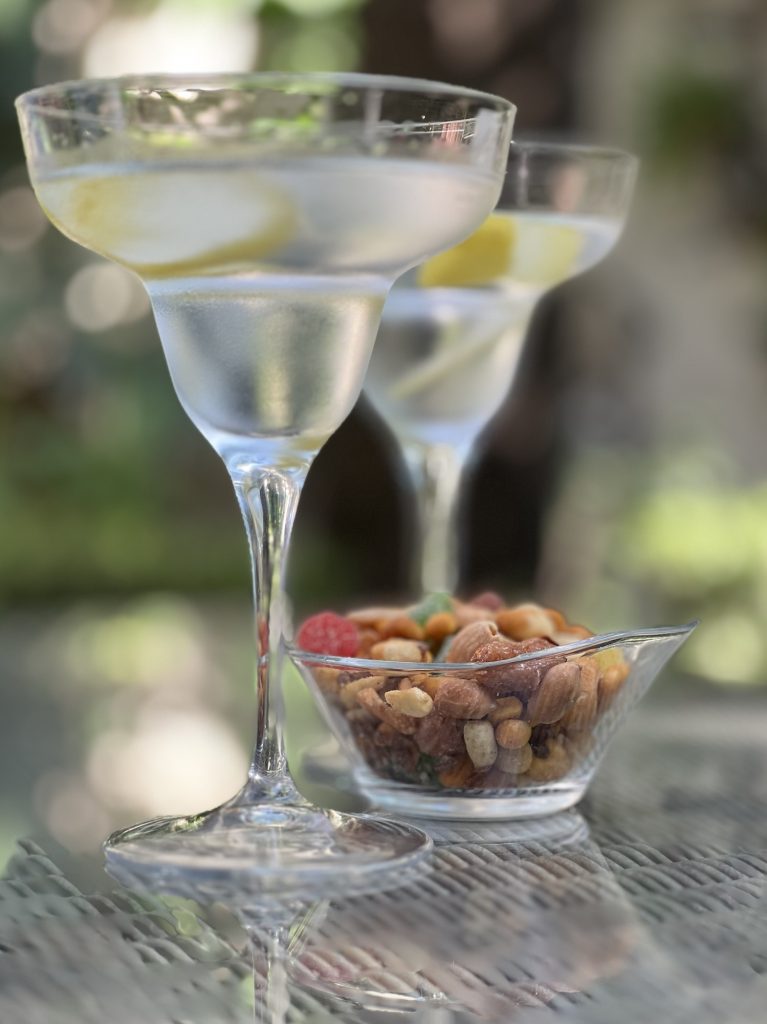
The next day we set out for a full day in Cordoba which is a city with a rich history. In short, the Romans arrived in 152BC to take over a Tartessian settlement. In AD711 it then fell to the Moors and became the capital of the caliphate of Cordoba, and by 1000 it was one of Europe’s biggest cities. During the Reconquista, in 1236, Ferdinand III claimed Cordoba for the Catholic kingdom of Castile. There was also a sizeable Jewish community from the 10th century until 1483, when they were expelled from Andalusia.
This makes for a cultural and archaeological bonanza, the highlight of which is the extraordinary Mezquita, the mosque-cathedral. At 24,000 sq m, it dwarfs everything else in Cordoba. When work on it began in 785, the emir Abd al-Rahman I was intent on creating a centre of worship on a par with those in Damascus and Baghdad.
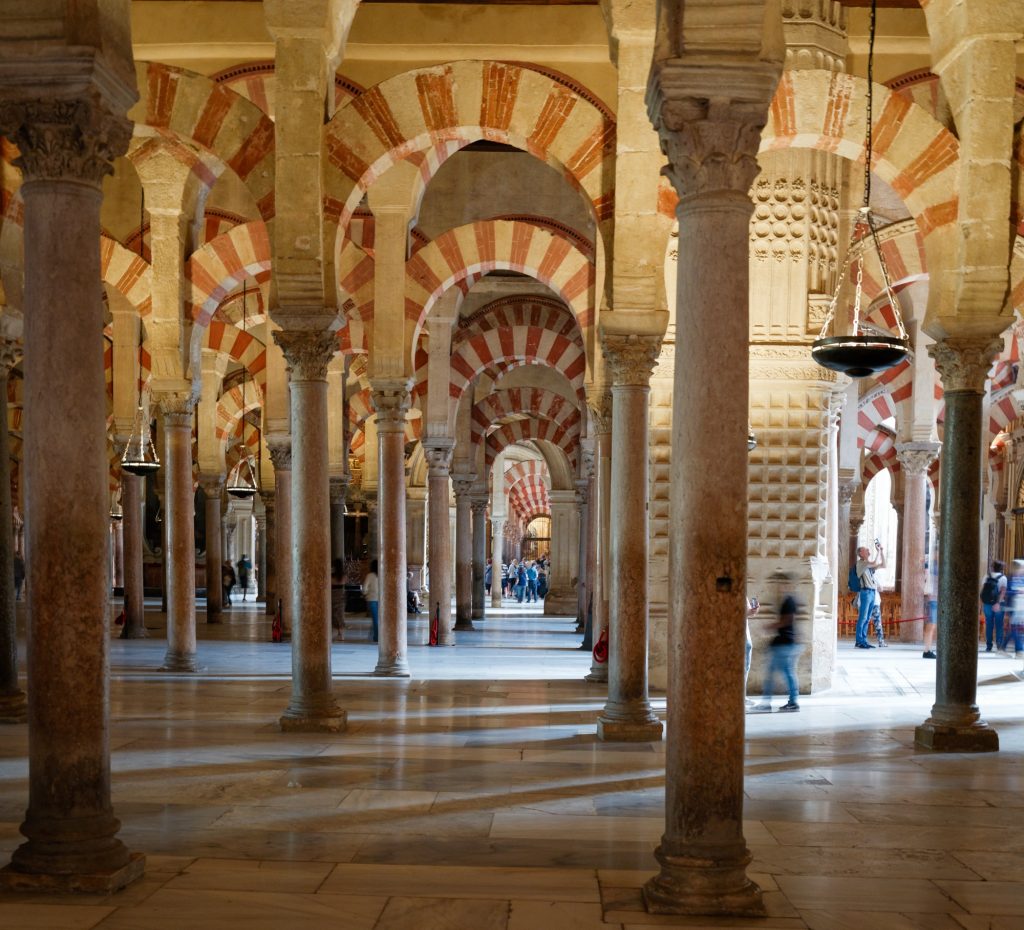
When you first go in all you can see are pillars, 856 of them, made of marble and jasper, stretching in every direction like an optical illusion, each connected by a candy-striped arch.
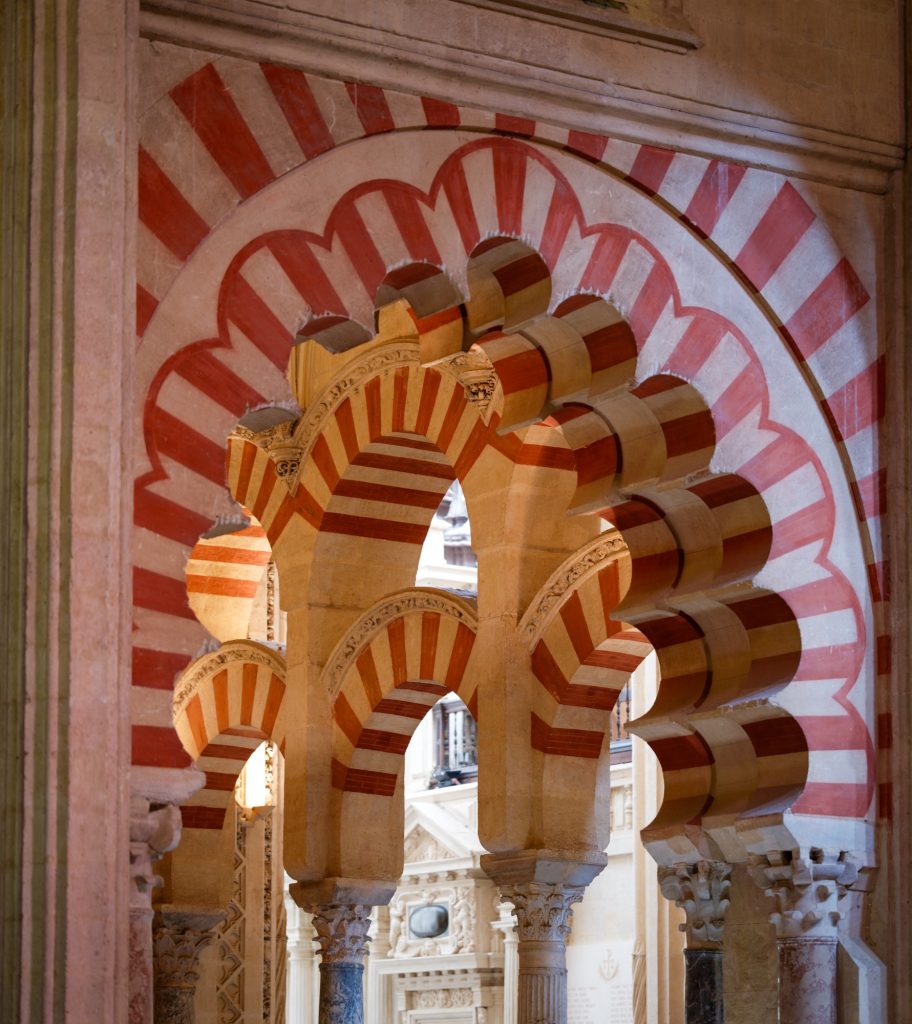
The mesquita went through three enlargements to cater for the growing population uptown the 12th century. At the height of Muslim worship it catered for some 40,000 worshippers. The alternating brick and stone elements (red and white) of the arches give the mesquita a distinctness which was maintained in latter constructions, although in the final extension they were painted red and white – perhaps there was a cost of living crisis at some point in the 10th century 😀
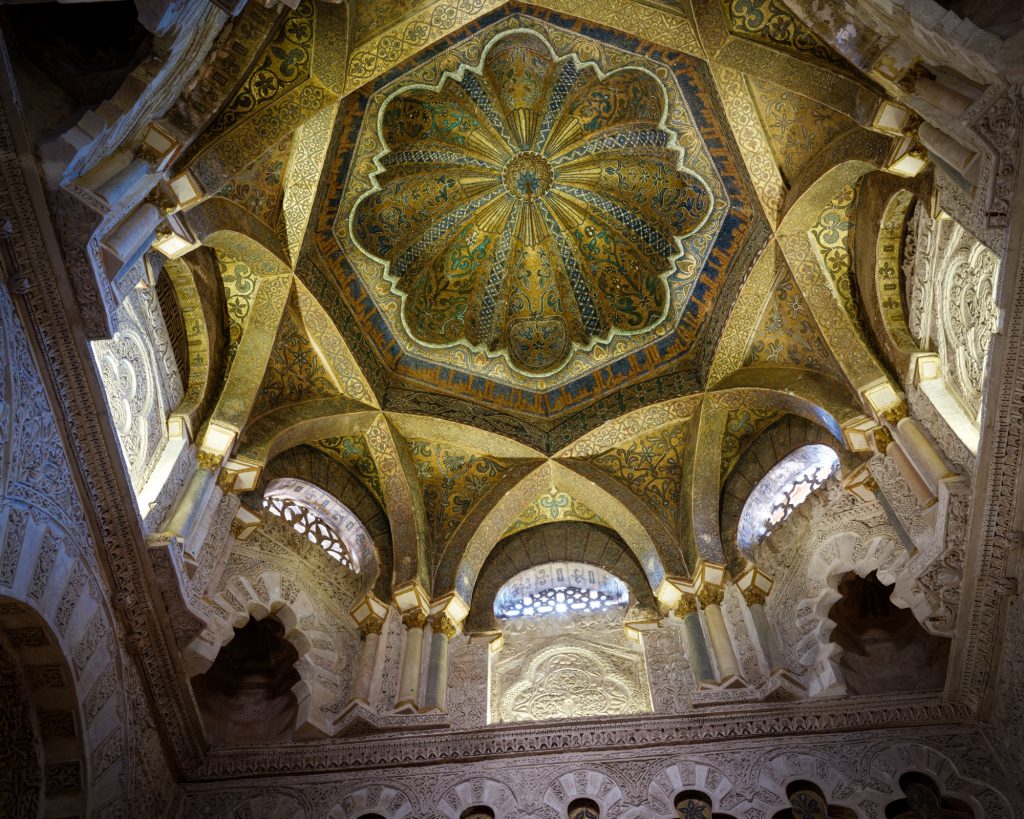
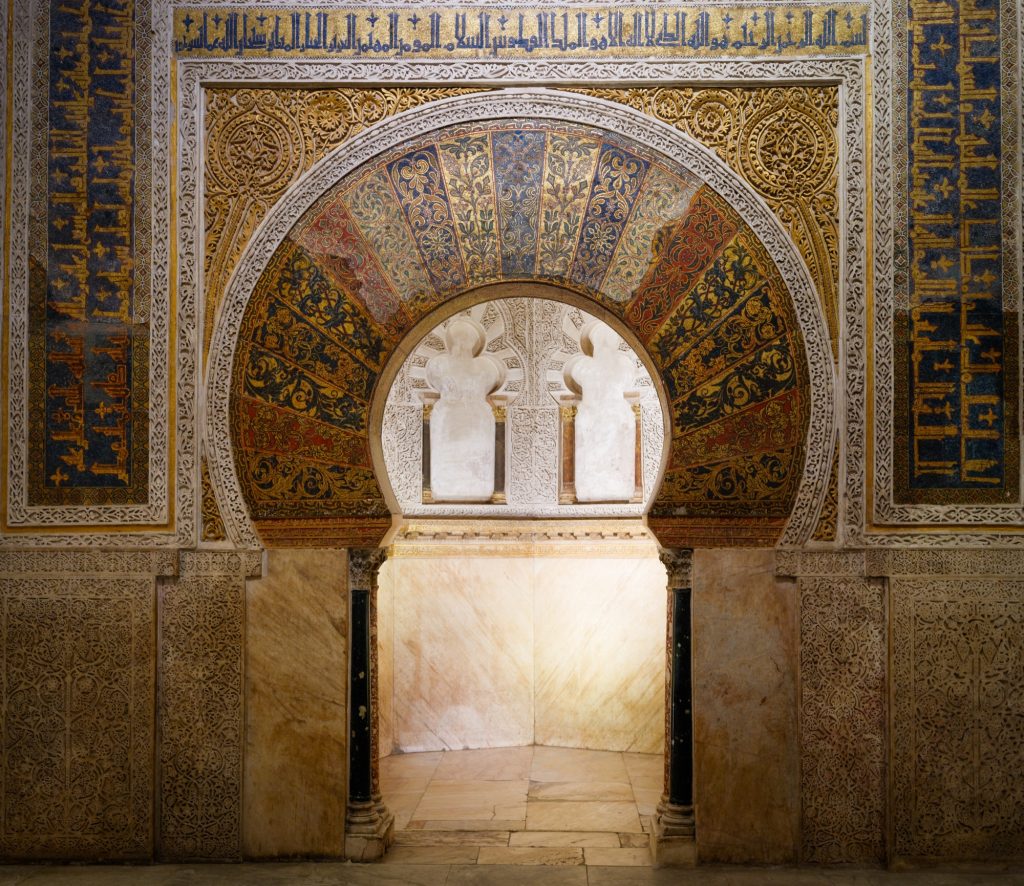
The Mihrab is the place in the mosque that serves as a reference point towards which prayers are directed. The Mihrab in Cordoba is one of the few that doesn’t actually face east, it seems because the mosque was built on top of Roman ruins. It is hard to describe or capture in a photo what a beautiful sight it is.
Still trying to get our heads around the scale of the place, we then walked into a cathedral, which hides in plain sight amongst all those pillars !
Following the Reconquista of the al-Andalusia which started in 711 but only finished in 1492, the Christians appropriated the mosque, fitted an altar beneath its skylight and set about constructing a cathedral around it.
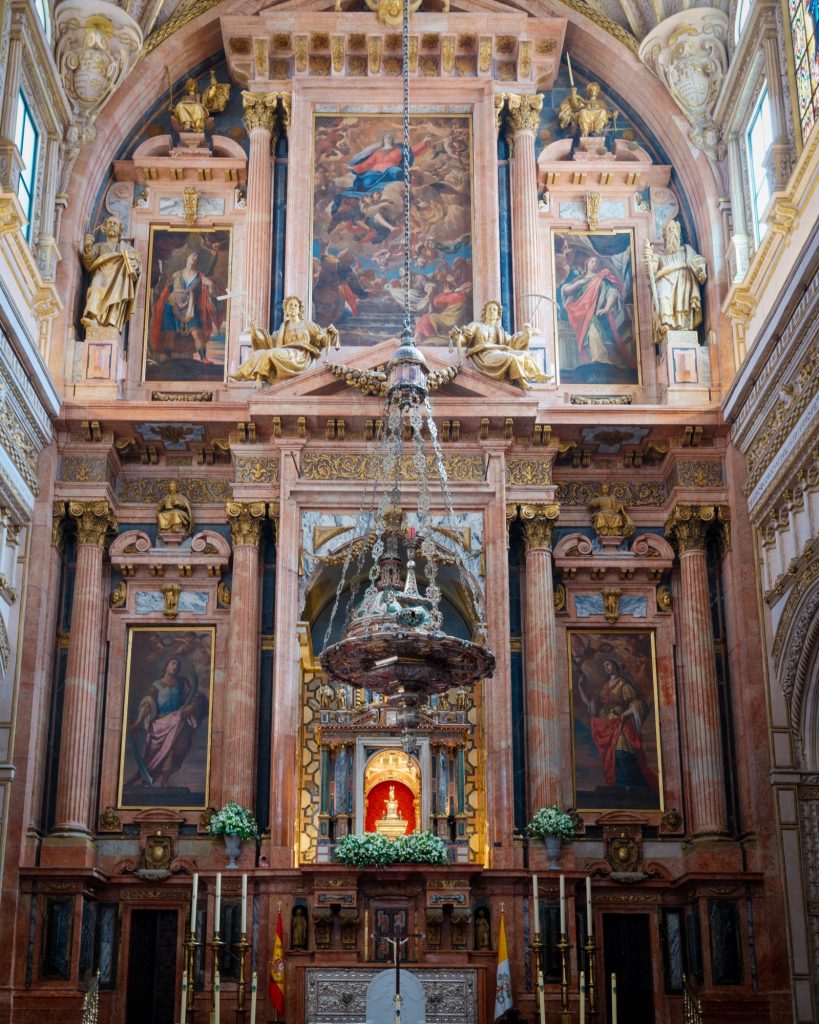
The cathedral was first established in 1146 when the Christians made their first dedication of it as a cathedral. However, the Muslims then took it back and it was not until 1236 until the second dedication as a cathedral took place. In 1492, the Nasrid Kingdoms of Granada finally fell to the Catholic Monarchs of Ferdinand and Isabella, and work on the cathedral then continued until the 18th century.
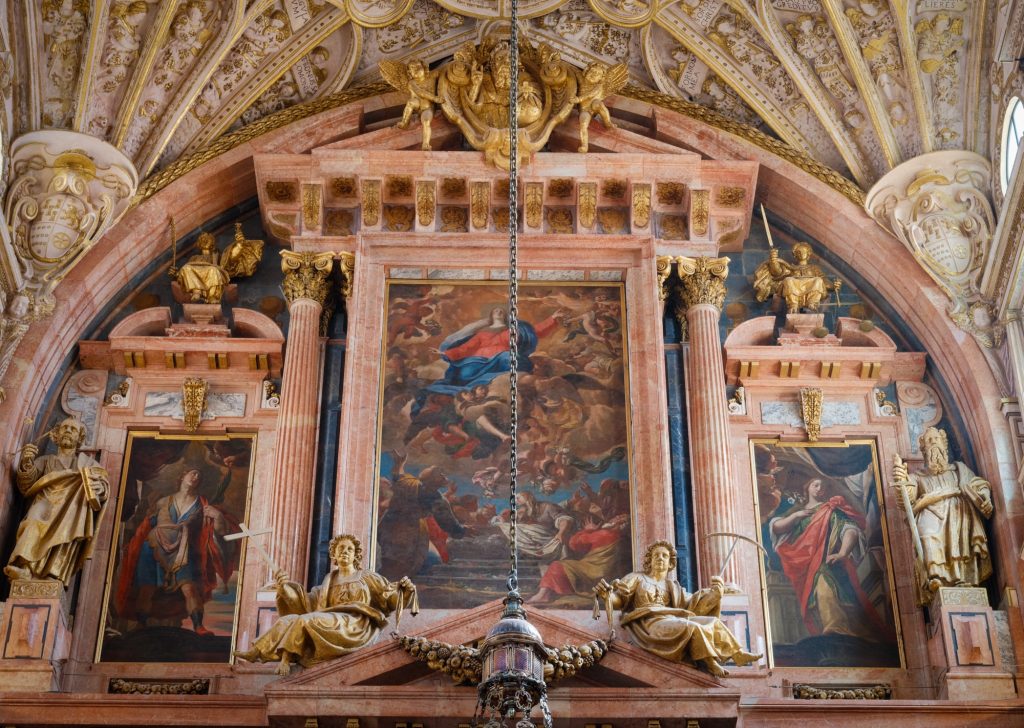
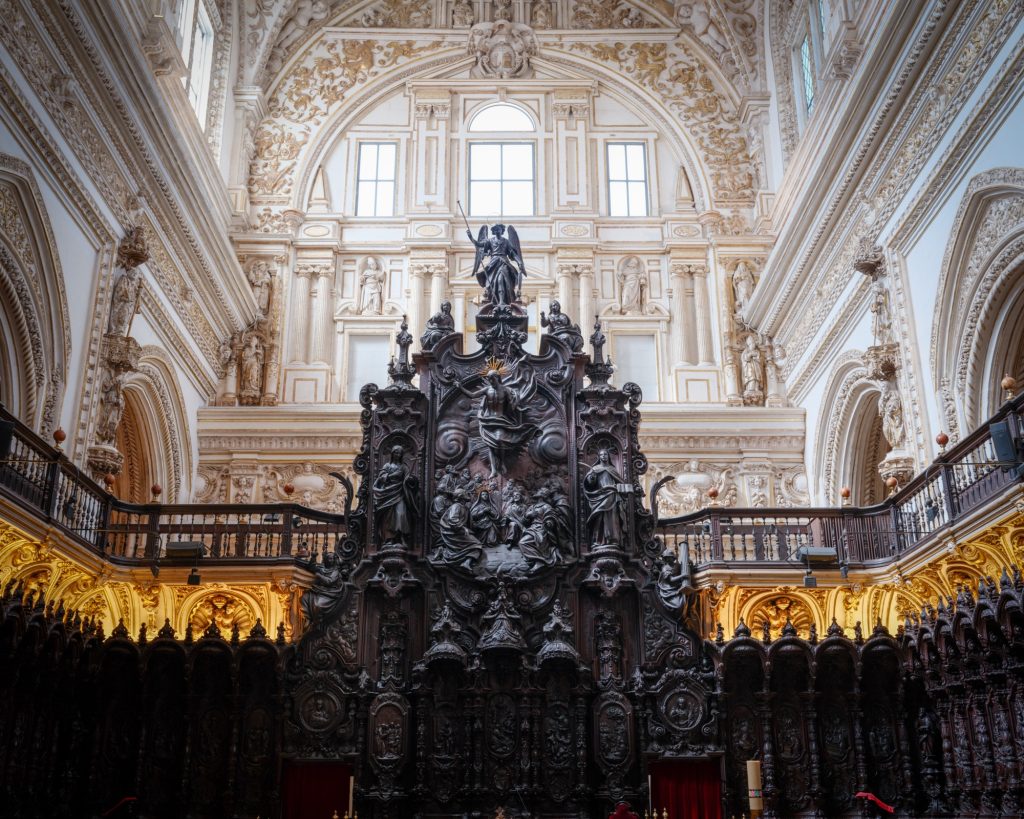
It is a very unique experience to find a mosque and cathedral side by side and we preferred the simplicity of the Mezquita over the ornate decoration of the cathedral.
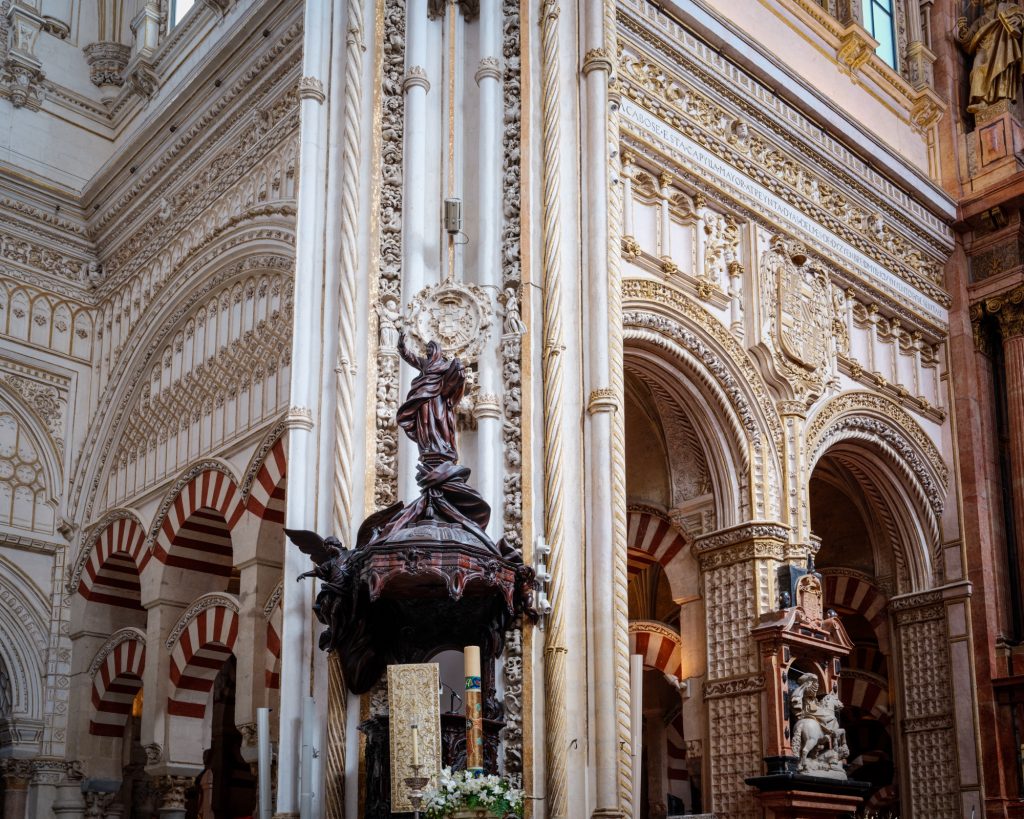
And so we concluded our tour of a fascinating site and one with such an incredible history.
Our next stop was also a Cordoban cultural icon – Bar Santos ! But this is famous for its tortilla patata 😀
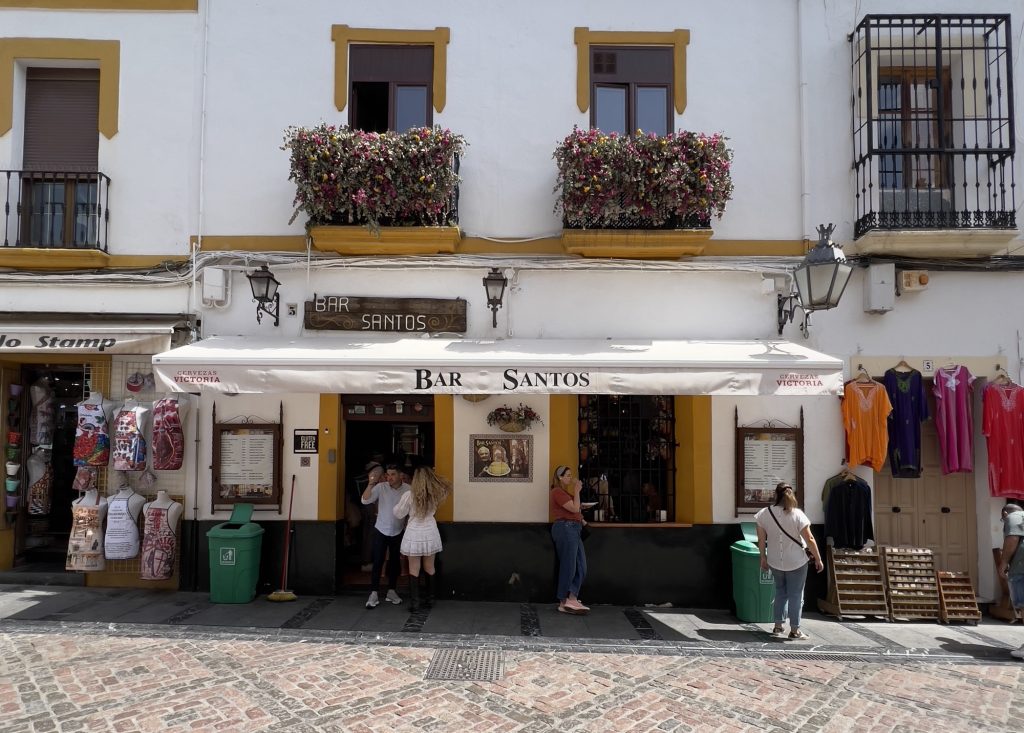
The whole tortilla is made with 5kg of potatoes and 30 eggs ! Naturally we only ordered a slice and as the weather was so hot Odie needed a beer to wash it down 😂
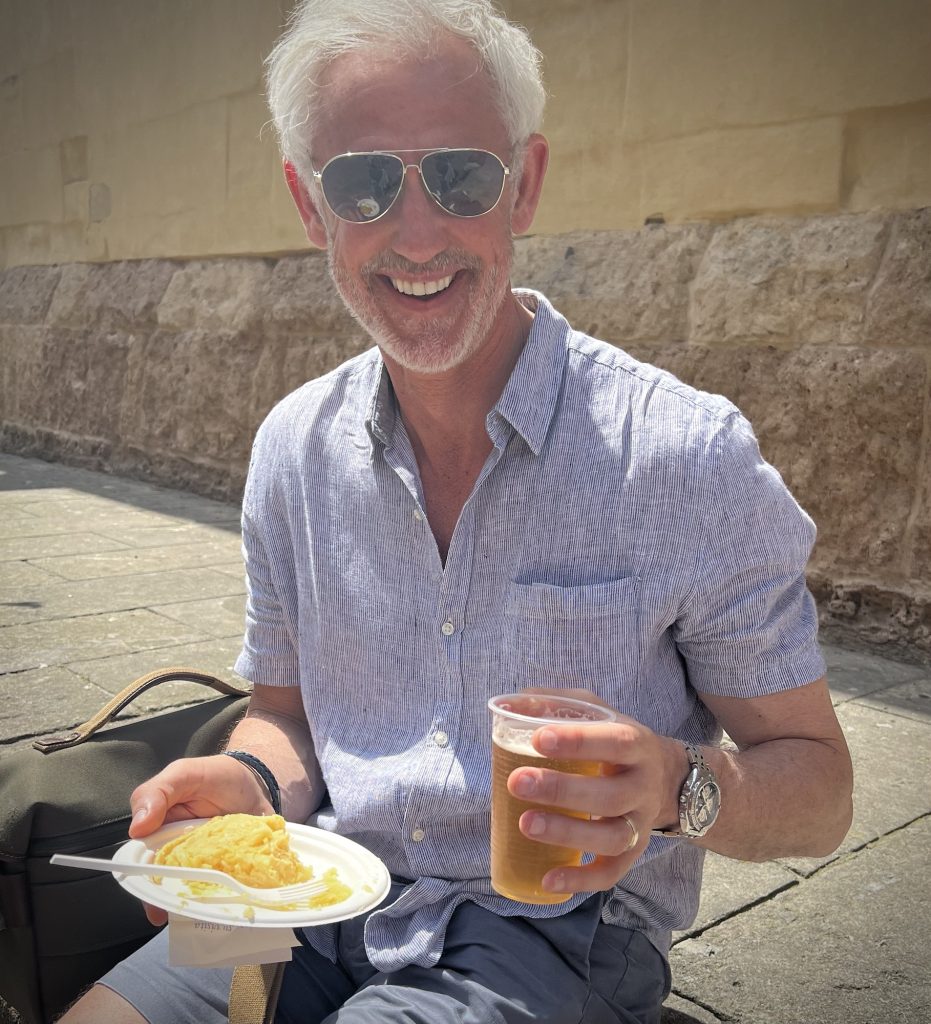
Once we felt refreshed we headed over to our next stop – the Alcazar of the Christian Monarchs.
The Alcazar has a history that reaches back centuries and whilst the interior didn’t wow us as much as the Mezquita, its gardens were fabulous. It also provides great views across Cordoba from the battlements. Fortunately Sue’s mountain goat instincts took over when a woman (in a hurry) tried to knock her over with an overstuffed backpack 😂
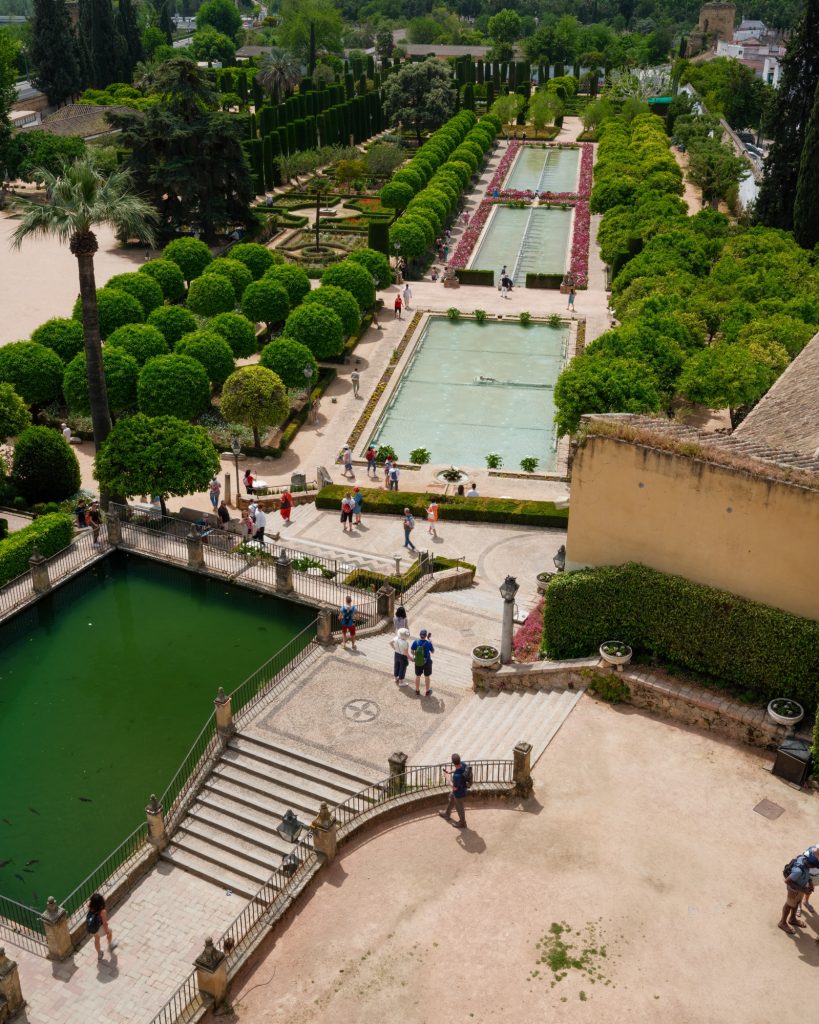
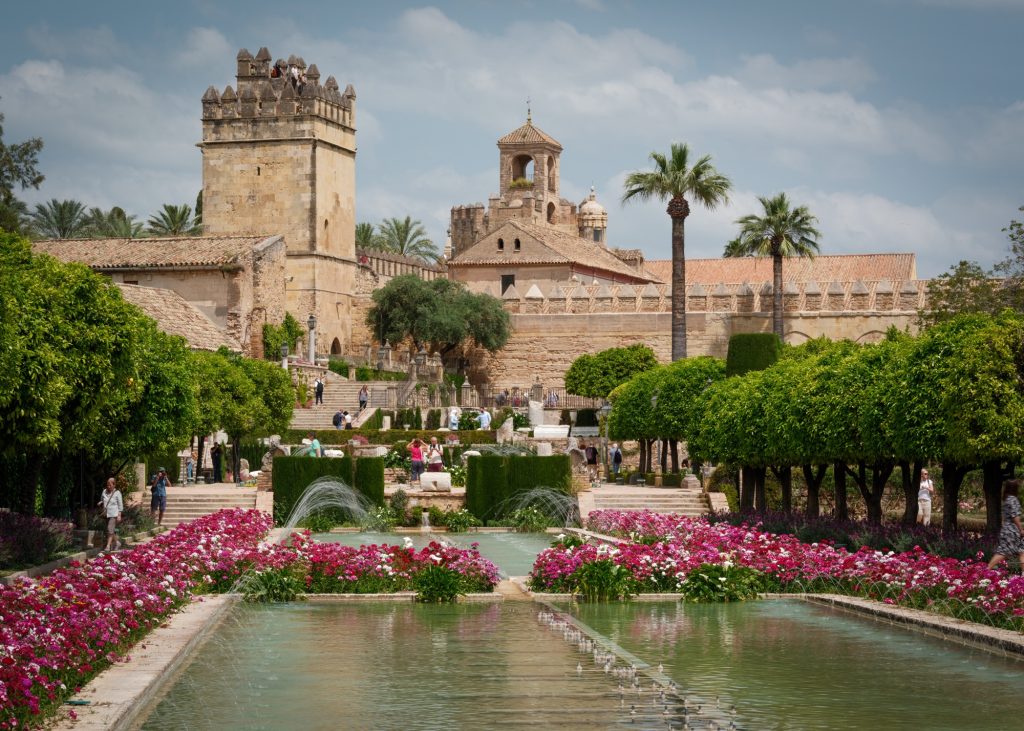
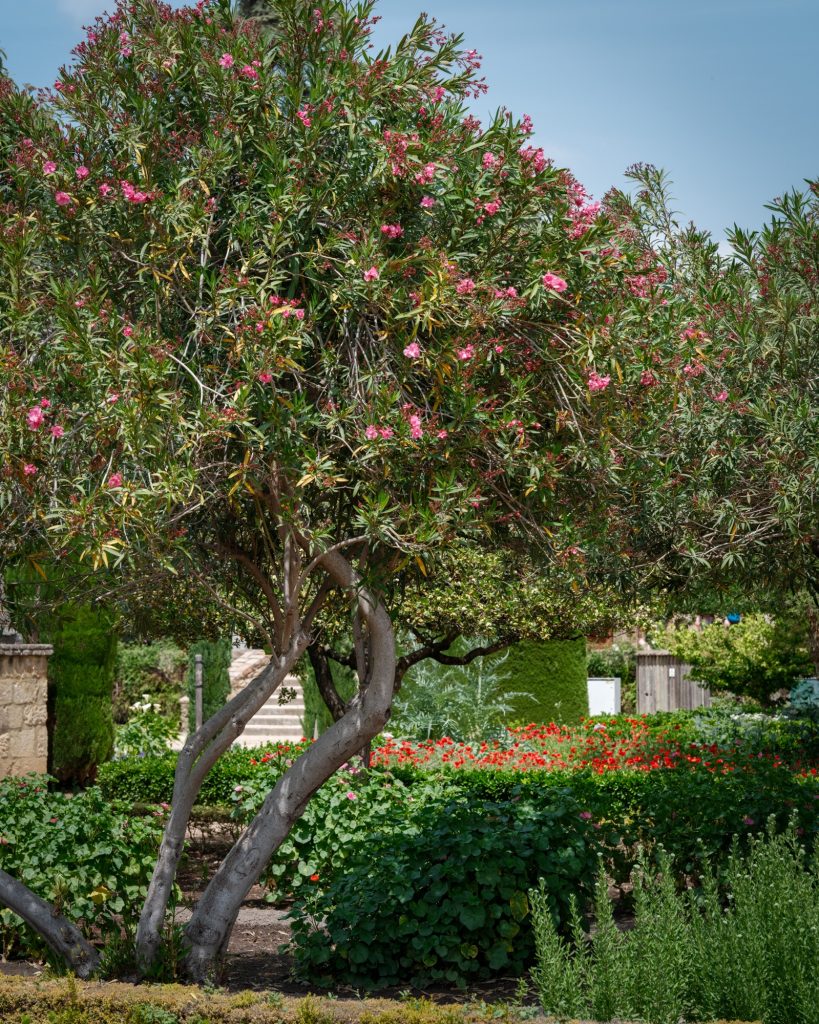
We then decided to walk back to the hotel through the picturesque Jewish quarter taking in beautiful patios along the way.
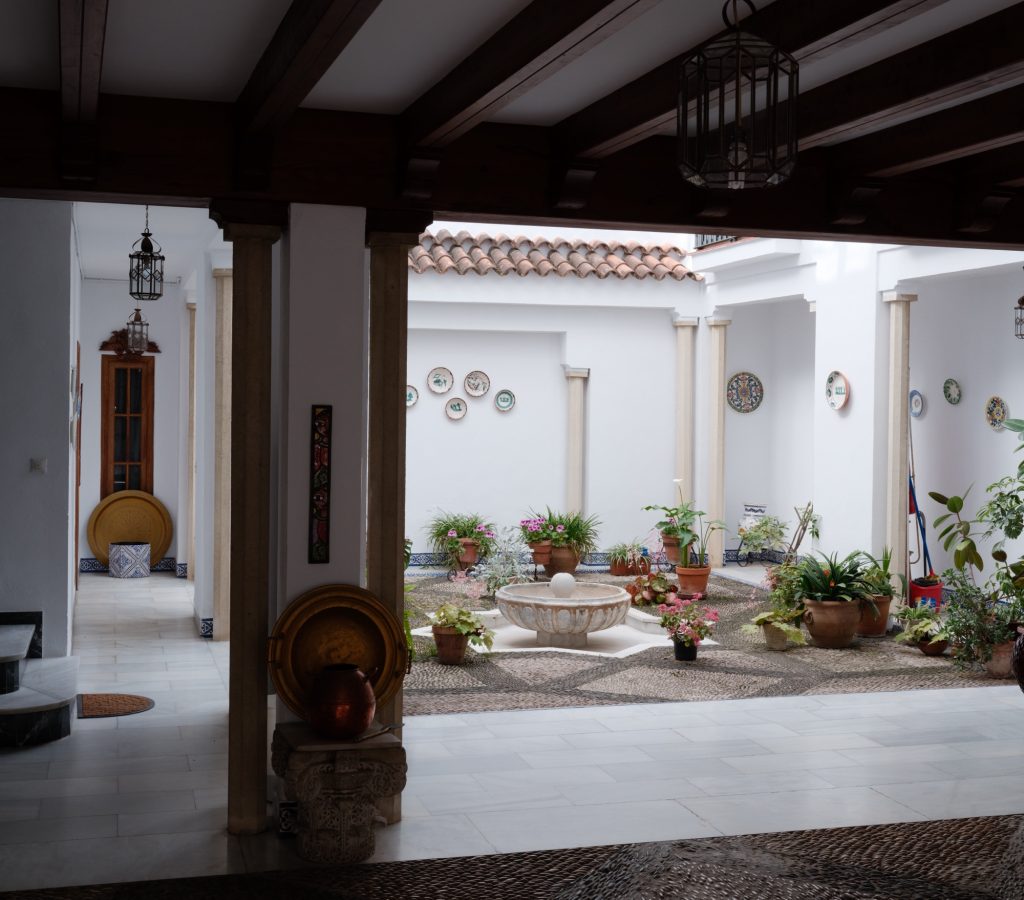
And after dinner that night our trip to Cordoba came to an end. Stay tuned for our next stop in Andalusia.
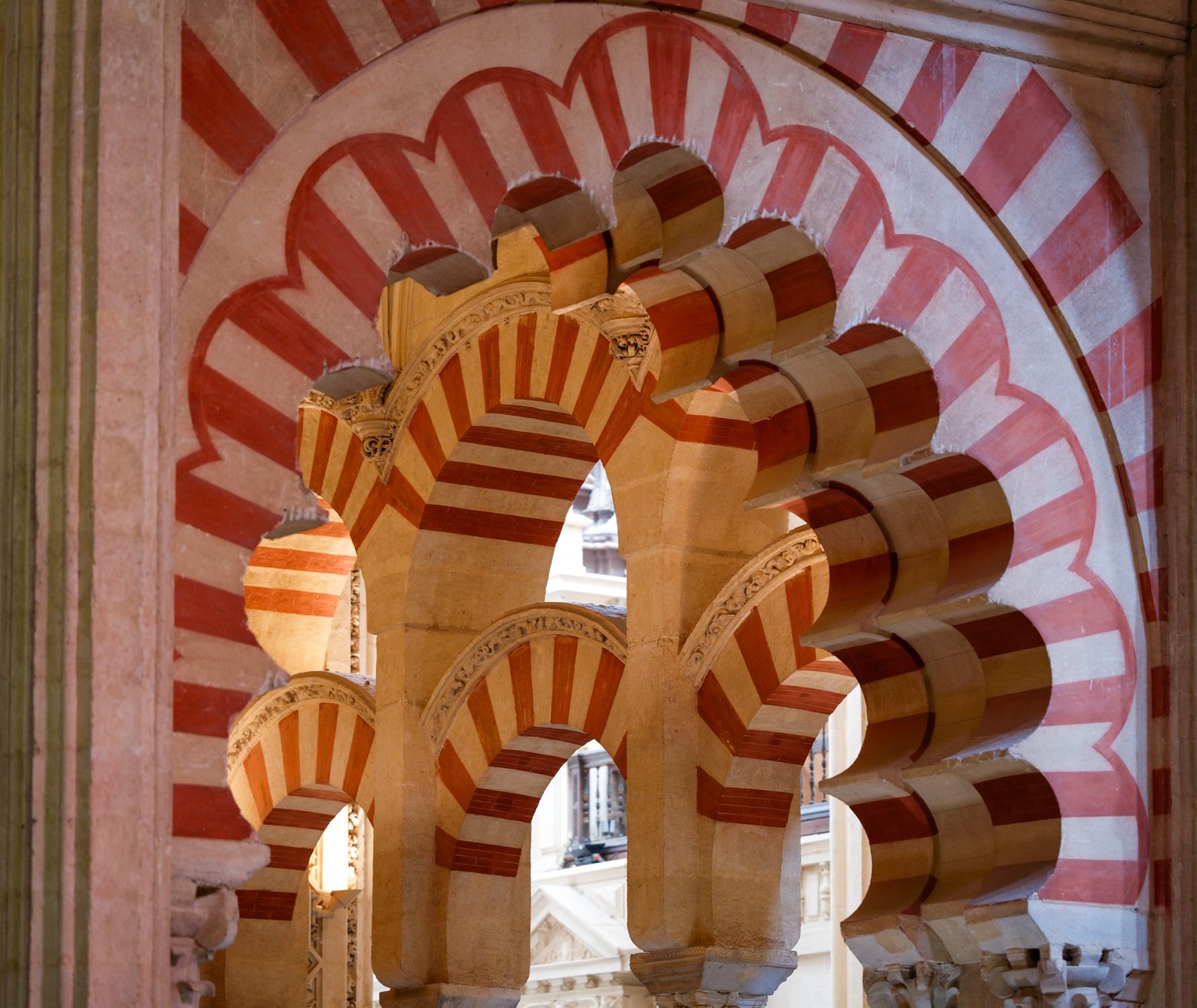
What absolutely amazing photos! Remember all these sights from the Michael Portillo visit. Hope the tortilla Pattata tasted as good as it looks! X
It was great Mum – especially with the beer 😀